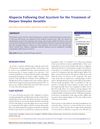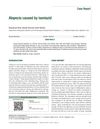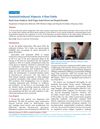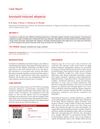Isonicotinic Acid Hydrazide Induced Anagen Effluvium and Associated Lichenoid Eruption
December 2001
in “
The Journal of Dermatology
”
TLDR A woman recovered from hair loss and skin eruptions after stopping a tuberculosis drug and using steroids.
A 32-year-old woman experienced generalized lichenoid eruptions and diffuse scalp hair loss of the anagen effluvium type while on anti-tubercular treatment, including isonicotinic acid hydrazide (INH). INH, known for causing drug eruptions, was discontinued, while other medications were maintained alongside 40 mg of prednisolone, which was tapered off over 10 weeks. Hair regrowth began 12 weeks after the onset of alopecia, leading to complete recovery. This case was notable as such anagen effluvium with lichenoid eruption due to INH had not been previously reported, and the recovery might have been aided by the early use of corticosteroids.




